Overview
The adoption of underground high-voltage systems in energy projects presents significant advantages:
- Improved reliability
- Enhanced safety
- Reduced environmental impact
- Lower long-term maintenance costs
These benefits are crucial in addressing the challenges faced by modern energy infrastructure. For instance, these systems demonstrate remarkable resilience to extreme weather, ensuring consistent performance. Additionally, their minimal visual disruption aligns with community standards and expectations, thereby fostering acceptance. Regulatory support further solidifies their position as a strategic choice in energy development. By choosing underground systems, stakeholders can effectively navigate the complexities of land acquisition while minimizing potential disruptions.
Introduction
As the energy landscape evolves, the shift towards underground high-voltage systems is becoming increasingly prominent. This transition addresses significant challenges in land acquisition, including legal and regulatory complexities. These innovative solutions promise a range of benefits:
- Enhanced safety
- Improved reliability
- Reduced environmental impact
- Greater aesthetic appeal
With advanced technologies driving their implementation, energy companies are now presented with a unique opportunity—not only to modernize their infrastructure but also to align with regulatory trends favoring underground installations. The multifaceted advantages of underground high-voltage systems can transform energy projects, effectively addressing the pressing demands of sustainability and community acceptance. How can your organization leverage these advancements to stay ahead in the evolving energy sector?
Harbinger Land: Comprehensive Solutions for Land Acquisition in Underground High-Voltage Projects
Harbinger Land specializes in providing comprehensive land acquisition services tailored for underground high-voltage systems. The complexities of land acquisition, including legal and regulatory challenges, can be daunting. Harbinger Land's expertise in site and right-of-way acquisition ensures that all necessary permits and legal requirements are met efficiently.
Leveraging advanced technology, such as AI-powered title research software and integrated GIS modeling services, Harbinger Land significantly enhances the accuracy and speed of the acquisition process. Their GIS mapping services provide clarity into all facets of an initiative, facilitating effective decision-making and promoting smoother execution for utility companies and municipalities alike.
Moreover, Harbinger Land's document imaging solutions allow for quick access to extensive datasets, optimizing title research and leasing procedures in utility and infrastructure projects. This capability proves particularly beneficial for Directors of Land Acquisition, who must navigate the complexities of managing land rights while ensuring compliance with regulatory requirements.
In summary, Harbinger Land stands ready to address the challenges of land acquisition with precision and expertise, making them an invaluable partner in the energy sector.
Enhanced Efficiency: How Underground High-Voltage Systems Reduce Energy Loss
Compared to overhead cables, underground high-voltage systems significantly reduce power loss during transmission. By operating at higher voltages, these systems decrease the current flowing through conductors, which in turn minimizes resistive losses. Additionally, underground high-voltage systems are less susceptible to environmental factors such as wind and ice, which can cause outages and power loss in overhead networks. This enhanced efficiency not only results in cost savings but also facilitates the transition to more sustainable energy practices.
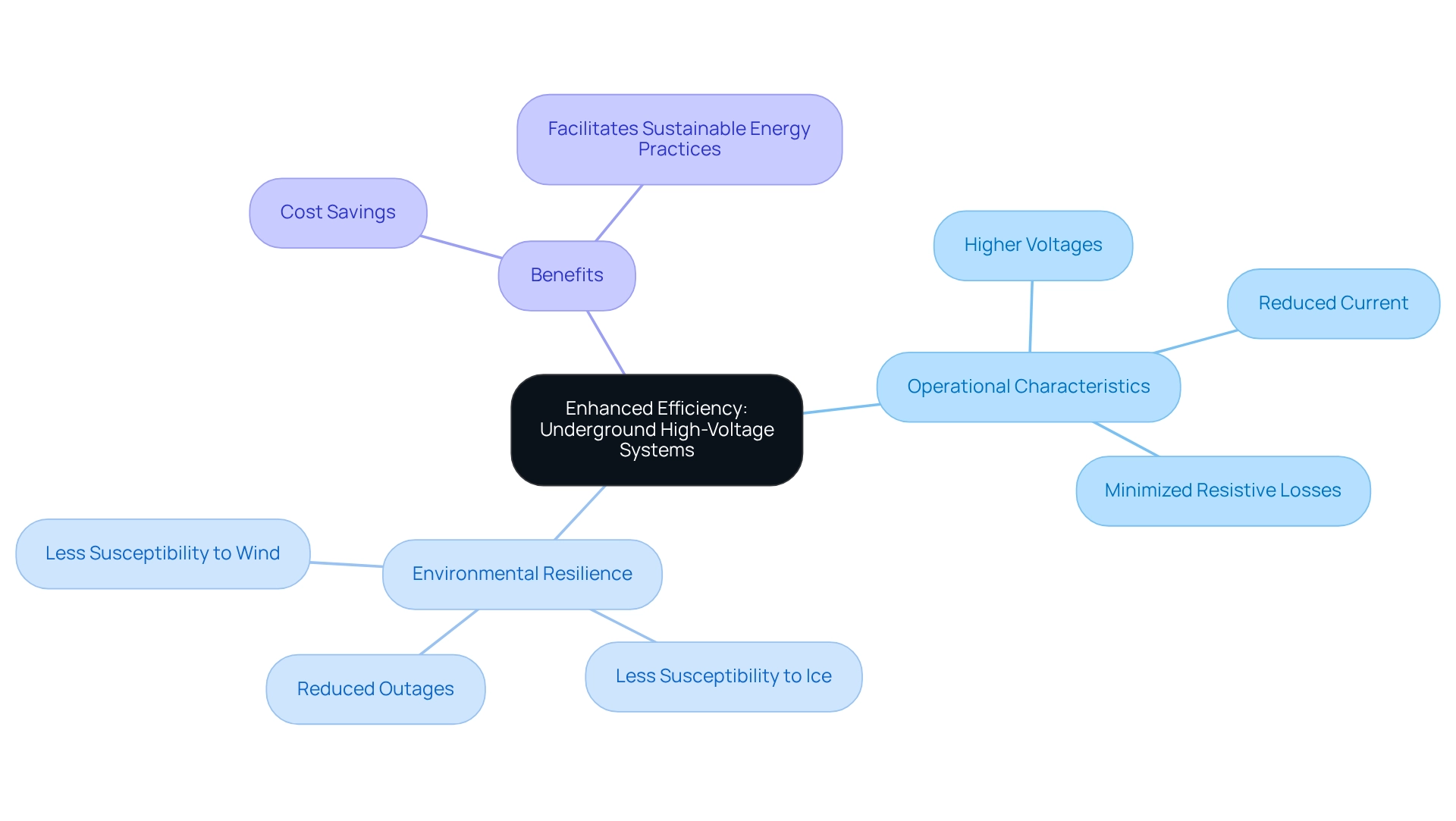
Environmental Impact: The Eco-Friendly Benefits of Underground High-Voltage Systems
Underground high-voltage systems provide substantial environmental benefits. They effectively diminish visual impact and reduce the likelihood of wildlife disturbances. By burying power lines, we preserve the aesthetic appeal of landscapes while minimizing the risk of accidents involving wildlife. Furthermore, underground high-voltage systems are less vulnerable to damage from extreme weather events, which can lead to hazardous situations and ecological degradation. This resilience positions them as a more sustainable choice for energy infrastructure.
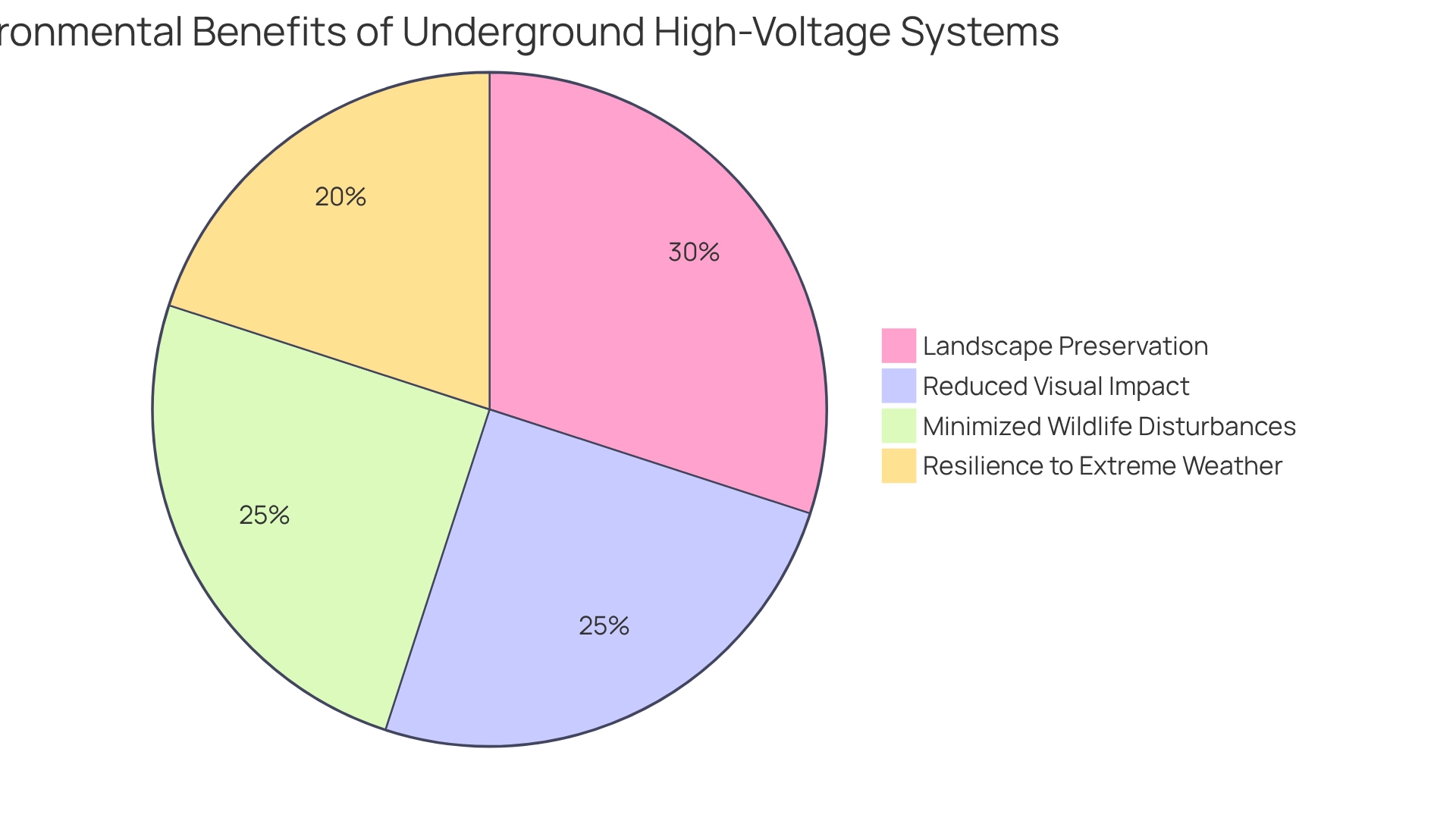
Improved Safety: Reducing Risks with Underground High-Voltage Systems
Underground high-voltage systems significantly enhance safety by mitigating risks associated with overhead lines. These systems are less susceptible to damage from falling trees, severe weather, and human activities, which can lead to power outages and accidents. Moreover, the risk of electrocution and fire hazards is diminished, rendering underground high-voltage systems a safer choice for both workers and the public. This improved safety profile serves as a compelling reason for energy companies to consider underground high-voltage systems as solutions.
Recent case studies illustrate the effectiveness of subsurface installations in bolstering safety outcomes. For example, utilities are increasingly investigating various funding mechanisms to support undergrounding projects, as mandated by recent legislation aimed at alleviating financial burdens on customers. Lawmakers, including Assemblymember Dawn Addis, have voiced concerns regarding the financial impact on PG&E's customers, underscoring the significance of these funding initiatives.
Expert insights highlight that the transition to underground high-voltage systems not only enhances safety but also contributes to long-term reliability. Robert Freedman noted that elevated setups pose dangers that may allow adversaries to incapacitate power networks and provoke outages, further emphasizing the safety advantages of below-ground structures. Safety statistics reveal that underground high-voltage systems experience fewer accidents than overhead lines, reinforcing the argument for their adoption in power projects. As energy firms confront the challenges of resource adequacy and infrastructure resilience, the persuasive safety attributes of underground high-voltage systems emerge as a crucial consideration.
Aesthetic Appeal: Minimizing Visual Impact with Underground High-Voltage Systems
One of the most significant advantages of underground high-voltage systems is their minimal visual impact. Unlike overhead lines that can dominate landscapes and disrupt views, underground cables remain hidden from sight, thereby preserving the natural beauty of the environment. This aesthetic allure can lead to increased community acceptance of power initiatives, as residents are often more supportive of infrastructure that does not disrupt their surroundings. By prioritizing aesthetics, energy companies can foster positive relationships with local communities.
How might this shift in approach influence future energy projects? The balance between functionality and visual appeal is essential in gaining public support.
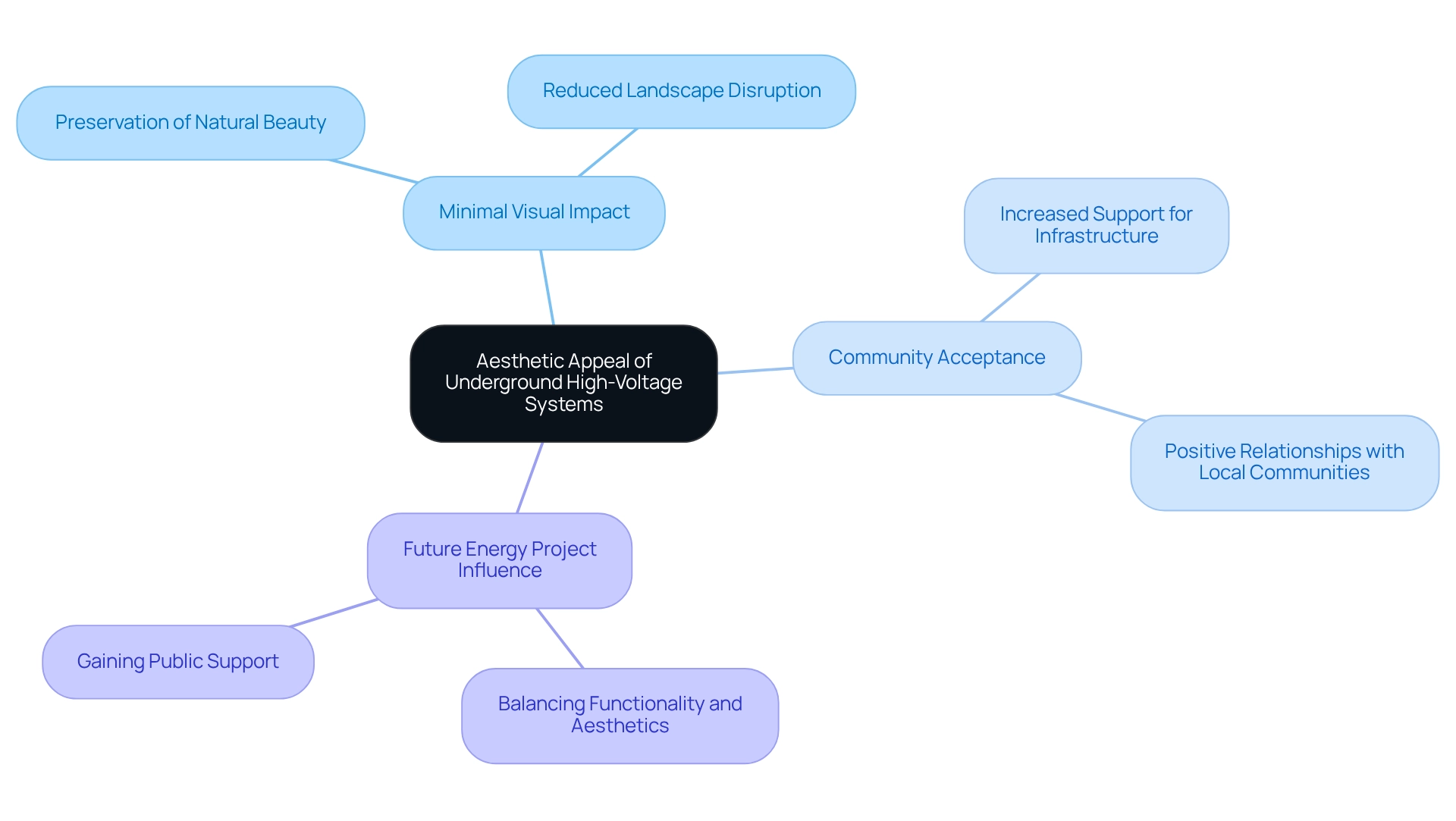
Increased Reliability: The Dependability of Underground High-Voltage Systems
Underground high-voltage systems provide a level of reliability that far surpasses their overhead counterparts. They are inherently less vulnerable to outages triggered by extreme weather phenomena, including high winds, ice storms, and lightning strikes. Additionally, buried cables are shielded from physical damage caused by falling trees or vehicle collisions. This enhanced reliability leads to fewer service disruptions and a more stable energy supply, positioning underground high-voltage systems as a compelling option for utilities aiming to bolster grid resilience.
Consider the implications of service interruptions on your operations. The implementation of underground high-voltage systems significantly reduces the risk of outages, ensuring a consistent energy supply. The complexities of land acquisition, including legal and regulatory challenges, are effectively addressed through these systems.
In conclusion, the advantages of underground high-voltage systems are clear:
- Improved reliability
- Reduced service disruptions
- Enhanced grid resilience
Utilities seeking to fortify their infrastructure should seriously consider transitioning to underground high-voltage systems.
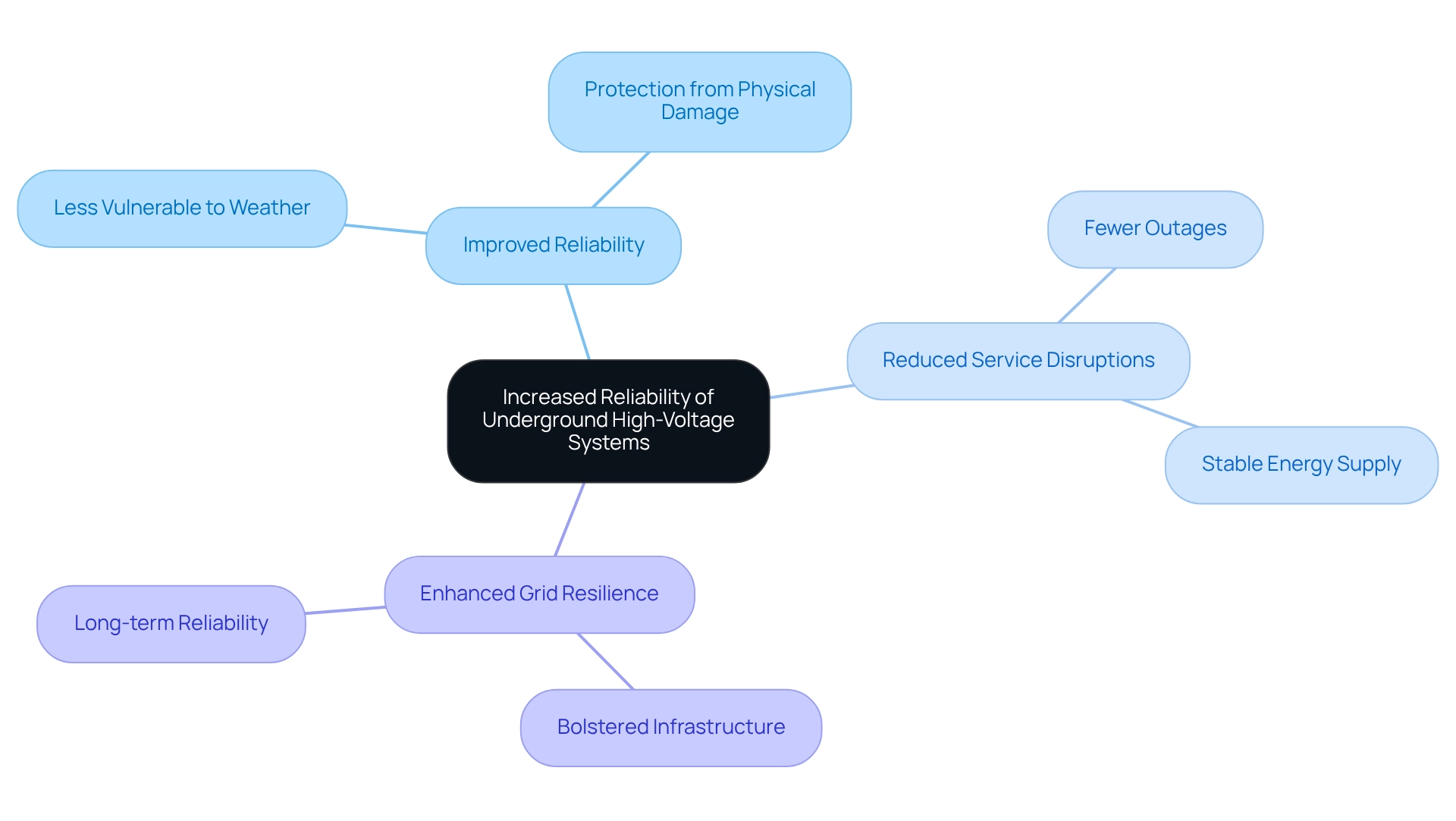
Cost Efficiency: Lower Maintenance Expenses with Underground High-Voltage Systems
While the initial installation costs of underground high-voltage systems often exceed those of overhead lines, they lead to significantly lower long-term maintenance expenses.
- Underground cables are inherently less vulnerable to environmental damage, resulting in a decreased frequency of repairs.
- Data indicate that subsurface networks experience fewer repair occurrences compared to their overhead counterparts, leading to reduced overall repair costs.
- Additionally, the removal of vegetation management and other maintenance tasks associated with overhead lines contributes to substantial cost savings.
Over time, these financial advantages can effectively offset the higher initial investment, positioning subterranean solutions as a more economically viable option for power projects. This is particularly relevant in light of case studies from Maryland utilities, such as Choptank and Conectiv, which faced challenges with subsurface infrastructure but ultimately recognized the long-term benefits of below-ground installations in terms of reliability and maintenance costs.
Financial analysts have noted that the long-term savings from underground high-voltage systems can be considerable, reinforcing the argument for their cost-effectiveness in the evolving power landscape. As Fintan Slye, director at National Grid ESO, remarked, the energy sector is set to transform at an extraordinary pace, making the implementation of effective networks, such as underground high-voltage systems, increasingly essential.
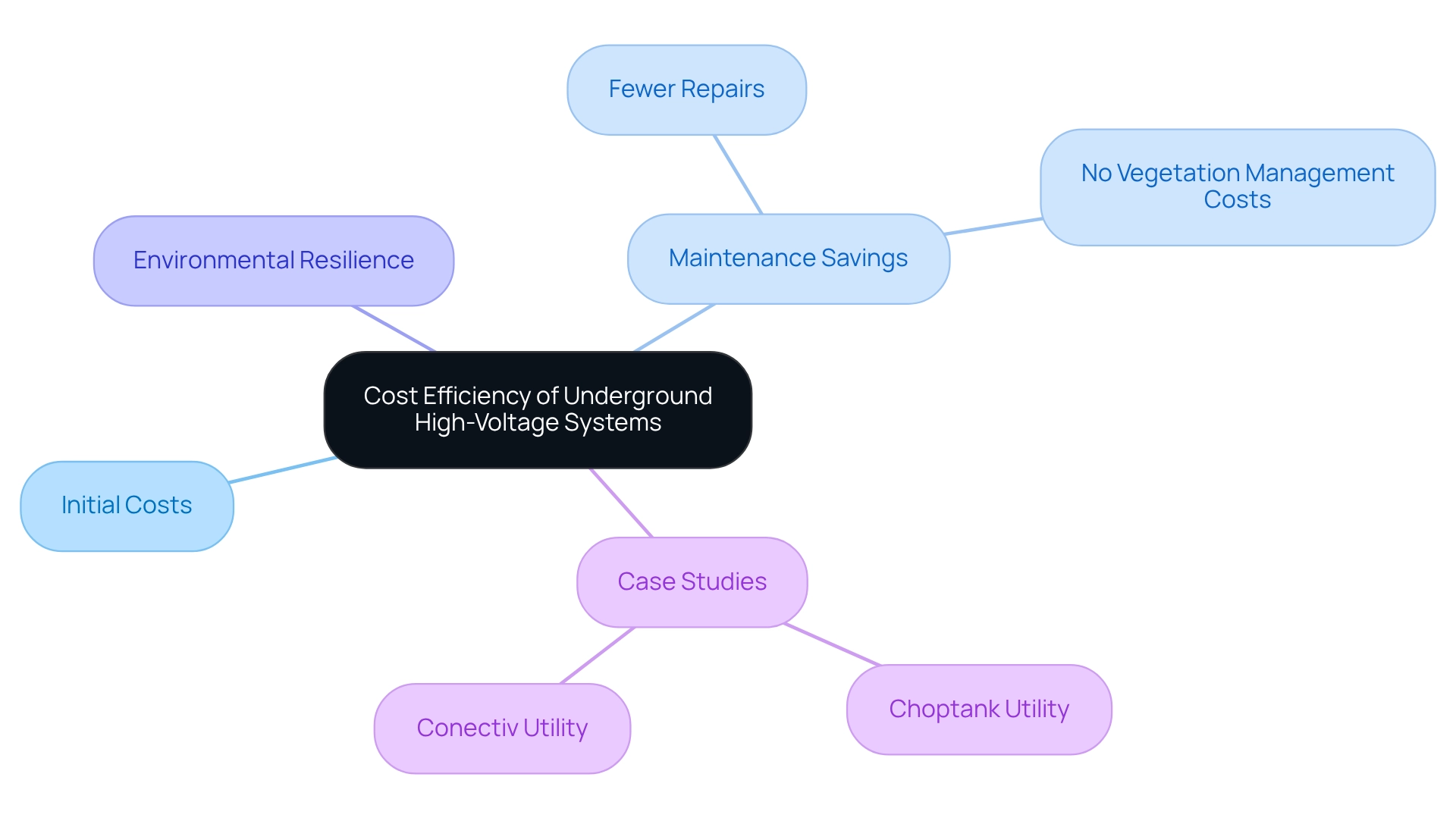
Technological Advancements: Innovations Driving Underground High-Voltage Systems
Recent technological advancements have dramatically improved the viability and efficiency of underground high-voltage systems beneath the surface. High-voltage direct current (HVDC) technology emerges as a pivotal innovation, enabling efficient long-distance power transmission with significantly reduced losses. This technology is essential as the demand for electricity continues to rise, facilitating the transfer of substantial power over extensive distances while preserving operational integrity. A case study titled "Role of HVDC Transmission in Modern Power Systems" illustrates that HVDC transmission offers distinct advantages over traditional AC transmission, including reduced losses and increased capacity, making it crucial for addressing the growing electricity demands.
Moreover, enhancements in cable insulation materials and installation methods have fortified the durability and reliability of underground high-voltage systems. These developments not only enhance performance but also make underground high-voltage systems increasingly appealing to power firms seeking to modernize their infrastructure. For instance, the integration of advanced materials has resulted in cables capable of withstanding harsher environmental conditions, thereby extending their operational lifespan.
Specialist perspectives underscore that these advancements are transforming the landscape of underground high-voltage systems within sub-surface power infrastructure. Engineers, such as Sudhir Kumar Jena, emphasize the continuous evolution of HVDC technologies as vital for meeting the changing needs of the power sector, ensuring efficient and dependable transmission across diverse applications. Consequently, energy firms are increasingly inclined to invest in subterranean solutions, recognizing their long-term benefits concerning efficiency and sustainability.
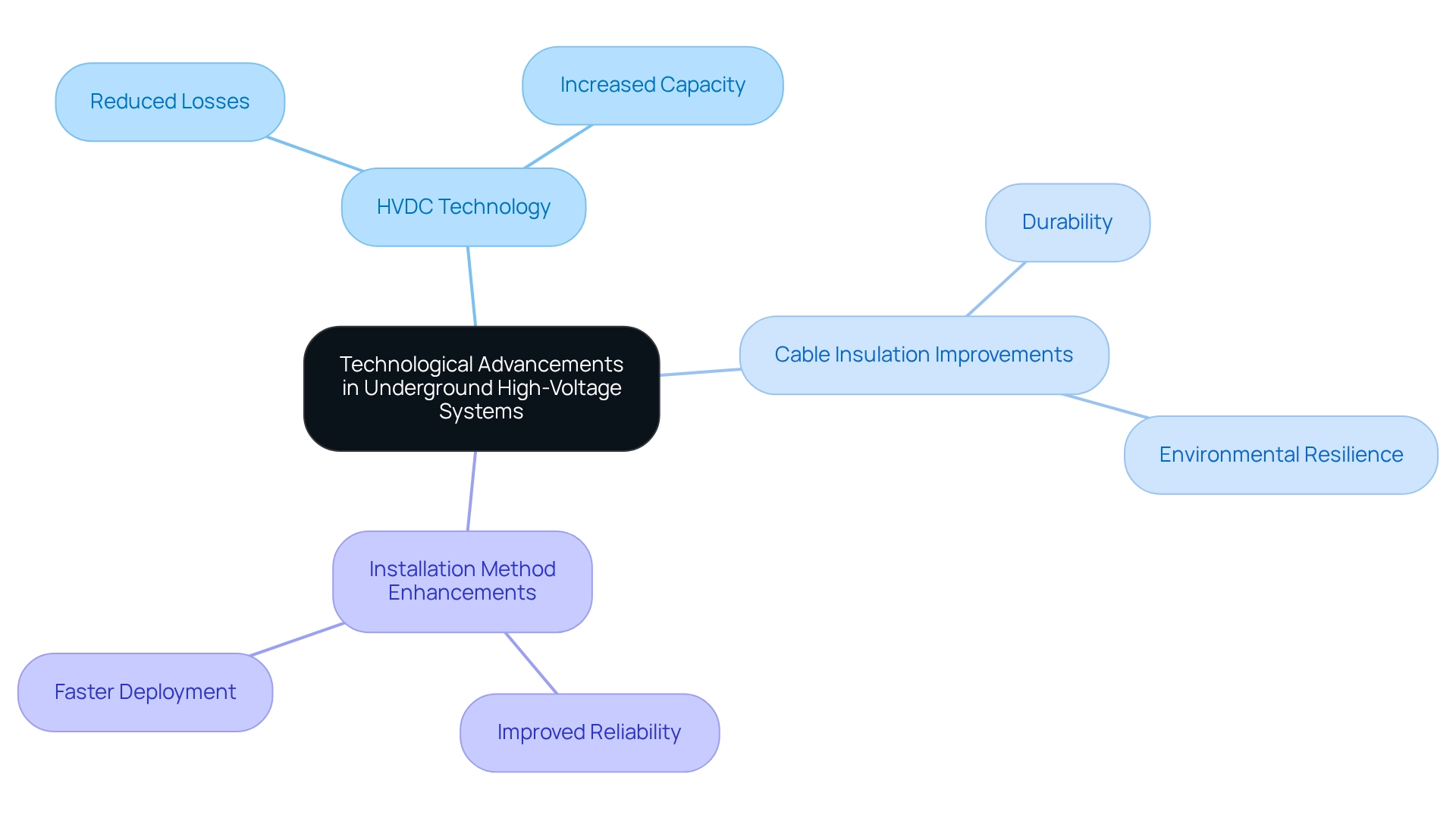
Regulatory Compliance: Navigating Legal Benefits of Underground High-Voltage Systems
The regulatory advantages offered by underground high-voltage systems can expedite project approvals significantly. Many jurisdictions actively promote concealed installations, recognizing their lower environmental impact and enhanced safety profiles. This preference for underground high-voltage systems often results in faster permitting processes and a reduction in legal challenges compared to overhead lines. For instance, Pacific Gas & Electric's initiative to relocate power lines to underground high-voltage systems addresses wildfire risks while aligning with regulatory trends that favor such installations.
Despite this progress, PG&E's residential customers have experienced rate increases exceeding 80% over the past three years, underscoring the financial implications of these initiatives. By embracing these regulatory preferences, energy companies can streamline the execution of projects involving underground high-voltage systems, mitigate potential delays, and enhance overall compliance with evolving legal frameworks.
Moreover, legal specialists indicate that underground high-voltage systems can contribute to fewer conflicts and more seamless discussions with regulatory authorities, ultimately benefiting timelines and financial plans. It is crucial for residents to remember to call 8-1-1 before digging to prevent accidents and ensure safety. This highlights the vital importance of safety considerations in below-ground installations.
Strategic Advantages: Why Choose Underground High-Voltage Systems for Future Projects
Opting for underground high-voltage systems in forthcoming energy initiatives presents a multitude of strategic advantages. The reliability of underground high-voltage systems is markedly enhanced, leading to lower maintenance costs while also mitigating environmental impacts—aligning seamlessly with Gro Harlem Brundtland's definition of sustainable development, which underscores the importance of meeting present needs without jeopardizing future generations.
The aesthetic benefits of below-ground installations foster community acceptance, as they typically result in fewer visual obstructions and disturbances. Moreover, adherence to regulatory standards is generally more straightforward, which facilitates smoother project approvals. As Dennis Kucinich aptly noted, the time has come for a sustainable power policy that prioritizes health and peace, resonating with the growing community support for underground high-voltage systems.
Additionally, the capacity for subterranean solutions to generate jobs and invigorate local economies, as illustrated in the case study 'The Future of Renewable Energy and Job Creation,' underscores their significance in contemporary energy strategies. Investing in underground solutions not only addresses immediate operational demands but also positions companies for enduring success and resilience in an ever-evolving landscape.
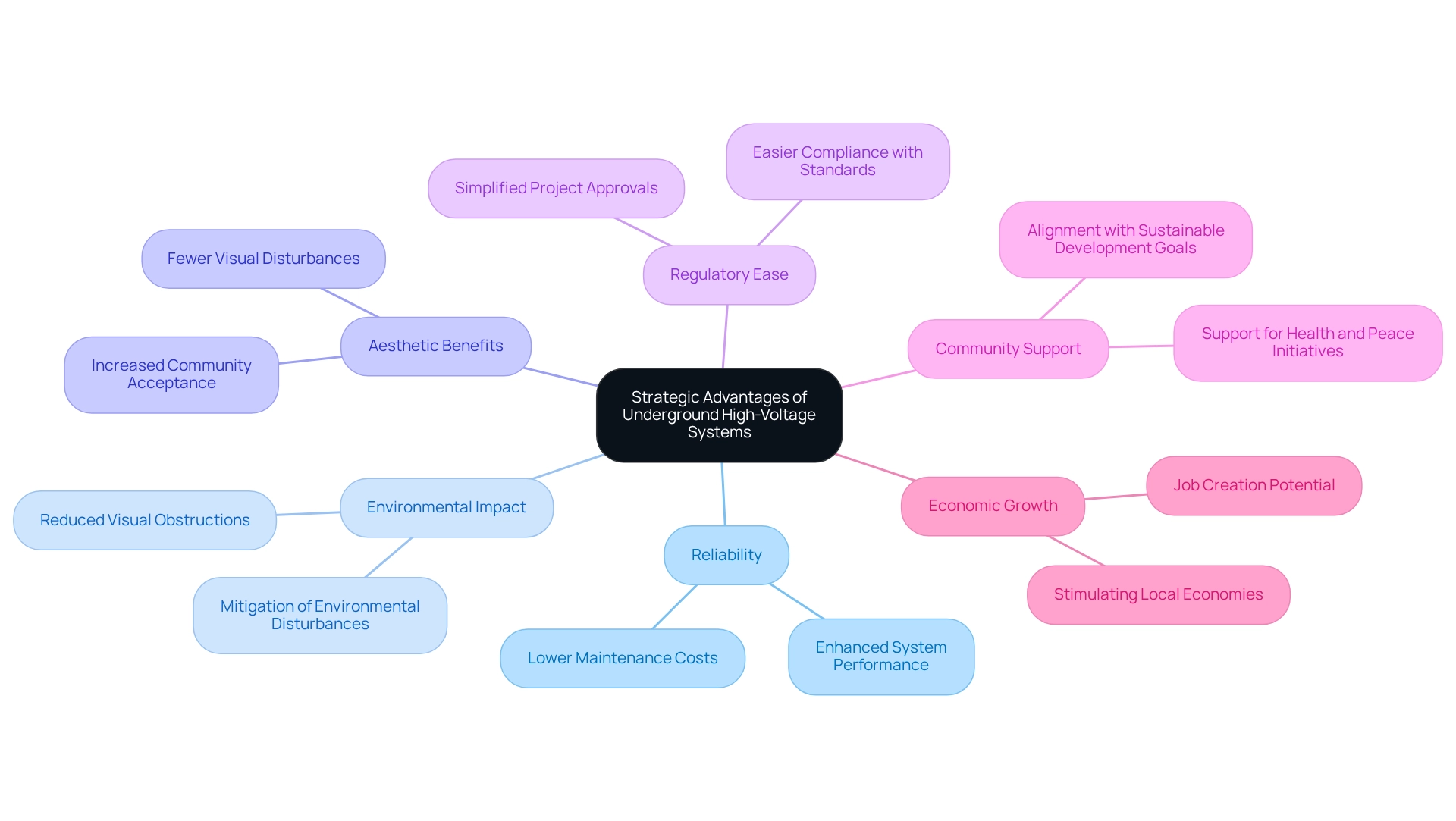
Conclusion
The transition to underground high-voltage systems signifies a pivotal evolution in energy infrastructure, presenting numerous advantages that effectively address contemporary sector challenges. These systems significantly enhance safety by mitigating risks linked to overhead lines and environmental factors, while concurrently improving reliability and lowering maintenance costs over time. The reduction in energy loss during transmission, along with environmental benefits such as diminished visual impact and reduced wildlife disruption, positions underground solutions as a more sustainable option for energy companies.
Moreover, the aesthetic appeal of underground installations cultivates greater community acceptance, enabling energy projects to resonate with public sentiment and align with regulatory trends. As jurisdictions increasingly favor underground systems for their safety and environmental advantages, energy companies can streamline project execution and navigate legal complexities with enhanced efficiency.
Given the technological advancements and the pressing need for sustainable development, investing in underground high-voltage systems addresses current operational requirements while preparing organizations for future challenges. By prioritizing these solutions, energy companies can fortify their infrastructure, contribute to environmental sustainability, and ensure long-term resilience in an ever-evolving energy landscape. Additionally, the potential for job creation and economic stimulation further emphasizes the strategic significance of underground energy solutions in shaping a sustainable energy future.
Frequently Asked Questions
What services does Harbinger Land provide?
Harbinger Land specializes in comprehensive land acquisition services tailored for underground high-voltage systems, ensuring all necessary permits and legal requirements are met efficiently.
How does Harbinger Land enhance the land acquisition process?
Harbinger Land leverages advanced technology, including AI-powered title research software and integrated GIS modeling services, to improve the accuracy and speed of the acquisition process.
What role do GIS mapping services play in land acquisition?
GIS mapping services provide clarity into all aspects of an initiative, facilitating effective decision-making and promoting smoother execution for utility companies and municipalities.
How do document imaging solutions benefit land acquisition?
Document imaging solutions allow for quick access to extensive datasets, optimizing title research and leasing procedures, which is particularly beneficial for Directors of Land Acquisition.
What are the advantages of underground high-voltage systems compared to overhead cables?
Underground high-voltage systems significantly reduce power loss during transmission, operate at higher voltages to minimize resistive losses, and are less susceptible to environmental factors that can cause outages.
What environmental benefits do underground high-voltage systems offer?
They diminish visual impact, reduce the likelihood of wildlife disturbances, and are less vulnerable to damage from extreme weather events, making them a more sustainable choice for energy infrastructure.
How do underground high-voltage systems contribute to sustainable energy practices?
By reducing power loss and being less affected by environmental factors, underground high-voltage systems facilitate cost savings and support the transition to more sustainable energy practices.
List of Sources
- Improved Safety: Reducing Risks with Underground High-Voltage Systems
- California regulators approve new program to expedite power line undergrounding (https://utilitydive.com/news/california-puc-power-line-undergrounding-program/709846)
- Cost Efficiency: Lower Maintenance Expenses with Underground High-Voltage Systems
- Out of sight, out of mind? Costs and benefits of undergrounding overhead power lines (https://renewableenergyworld.com/power-grid/grid-modernization/out-of-sight-out-of-mind-costs-and-benefits-of-undergrounding-overhead-power-lines)
- Comparison of Overhead and Underground Cables (https://tratosgroup.com/tratos-cable-academy/comparison-of-overhead-and-underground-cables)
- Technological Advancements: Innovations Driving Underground High-Voltage Systems
- HVDC Transmission’s Role in Modernizing Power Grids (https://clouglobal.com/hvdc-transmissions-essential-role-in-modernizing-power-grids)
- Regulatory Compliance: Navigating Legal Benefits of Underground High-Voltage Systems
- California regulators approve new program to expedite power line undergrounding (https://utilitydive.com/news/california-puc-power-line-undergrounding-program/709846)
- Underground Power Line Pilot Program Proves Highly Effective Against Recent Severe Weather (https://prnewswire.com/news-releases/underground-power-line-pilot-program-proves-highly-effective-against-recent-severe-weather-302475791.html)
- Strategic Advantages: Why Choose Underground High-Voltage Systems for Future Projects
- 60 Quotes About the Future of Renewable Energy (https://deliberatedirections.com/renewable-energy-quotes)




